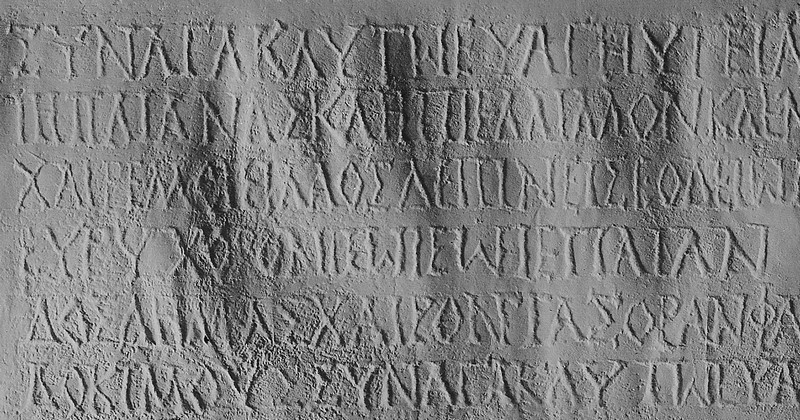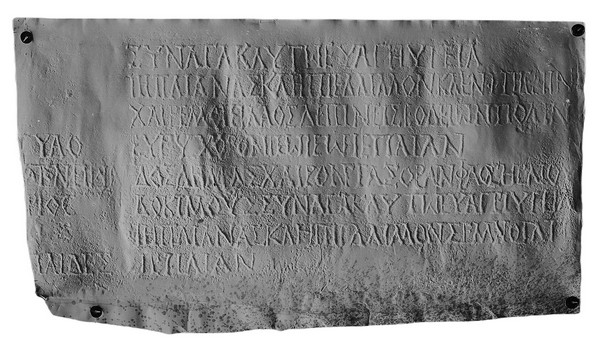“favourable come to the vast city of the inhabitants of Dion, ie Paean”
In 1914, two years after the liberation of Macedonia, the Ephor of Antiquities G. Oikonomos recorded and published a remarkable number of inscriptions from ancient Dion. In fact, he collected some of them, creating the first Archaeological Collection of Dion. The declaration of the First World War, and the difficult years that followed, made the safeguarding of antiquities extremely difficult resulting in definite loss of a certain number of them.
Among the lost antiquities is a verse inscription which testifies to the special position held by the worship of Asclepius in Dion during Roman times. The text of the inscription is a paean written in dactylic rhythm, characterized by the repetition of the invocation of the honored god: ie Paean. The hymn begins with a reference to Asclepius’ parents, Apollo and Coronis, his wife Epione and his children Machaon, Podaleirius, Iaso, Akeso, Aigle, Panakeia, Hygieia, and ends with a supplication for protection and health of the inhabitants of Dion.
The Dion paean dates to the 2nd-3rd c. AD. The same text, with minor variations, has also been found at Erythrae in Asia Minor (386-360 BC), Ptolemais in Egypt (97 AD) and Athens (1st-3rd c. AD). The spread of the hymn reveals a tradition with deep roots, probably going back to an Attic model of the Classical period.
The paean was a hymn with supplicatory or thanksgiving content, sung by a chorus of young men accompanied by a flute. It played an important role both in the public worship and the healing practices applied in the sanctuaries of Asclepius. Singing of paeans in musical performances functioned as a means of therapy and wellness not only for the sick people but also for the entire city. In the Roman era, the public events for Asclepius were completely intertwined with the cultural environment of the 2nd-3rd c. A.D. which sought the favour of protective deities.
Bibliography
Οικονόμος Γ., Eπιγραφαί της Μακεδονίας Ι, Αθήναι 1915, 8-12, αρ. 4 (ed. pr.).
Plassart A., “Inscriptions de Piérie, d’Emathie et de Bottiée”, BCH 47 (1923), 164.
Melfi M., “Ritual Spaces and Performances in the Asklepieia of Roman Greece”, The Annual of the British School at Athens, 105 (2010), 317-338.
Faraone C.A., “An Athenian Tradition of Dactylic Paeans to Apollo and Asclepius: Choral Degeneration or a Flexible System of Non-Strophic Dactyls?”, Mnemosyne, 2011, Fourth Series, Vol. 64, Fasc. 2 (2011), 206-231.
Piguet, Ém., “Les péans à Asclépios: innovations et continuités”, Dialogues d’ histoire ancienne 38/1: (2012), 53-86.


